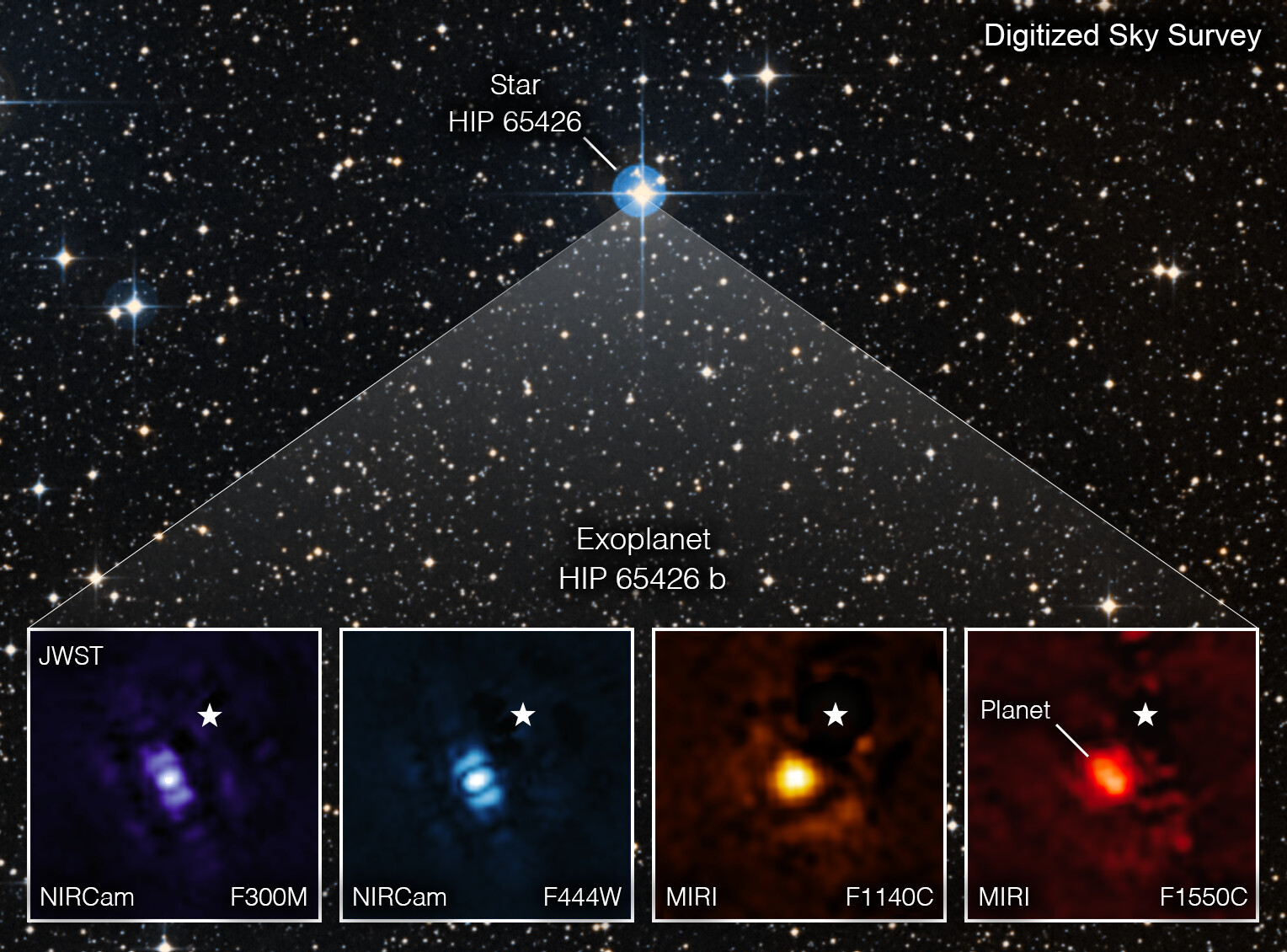Observations
Childpage navigation

James Webb Telescope: For the first time, astronomers have used the NASA/ESA/CSA James Webb Space Telescope to take a direct image of an exoplanet. The exoplanet is a gas giant, meaning it has no rocky surface and could not be habitable. The image, as seen through four different light filters, shows how Webb’s powerful infrared gaze can easily capture worlds beyond our solar system, pointing the way to future observations that will reveal more information than ever before about exoplanets. (Public)
While the direct detection and characterization of terrestrial exoplanets is out of reach with existing facilities, we are involved in and carry out various obeserving programs at the world's largest telescopes to search for and study (young) gas giant exoplanets and their formation environment. This allows us to learn about the overall exoplanet population and planetary formation processes and we gain valuable information how observations with future instruments could be further optimized. Some members or our group also work with data from Earth observing satellites to understand how Earth would look as an exoplanet and how this information could be used to inform the design and performance of future projects and missions.